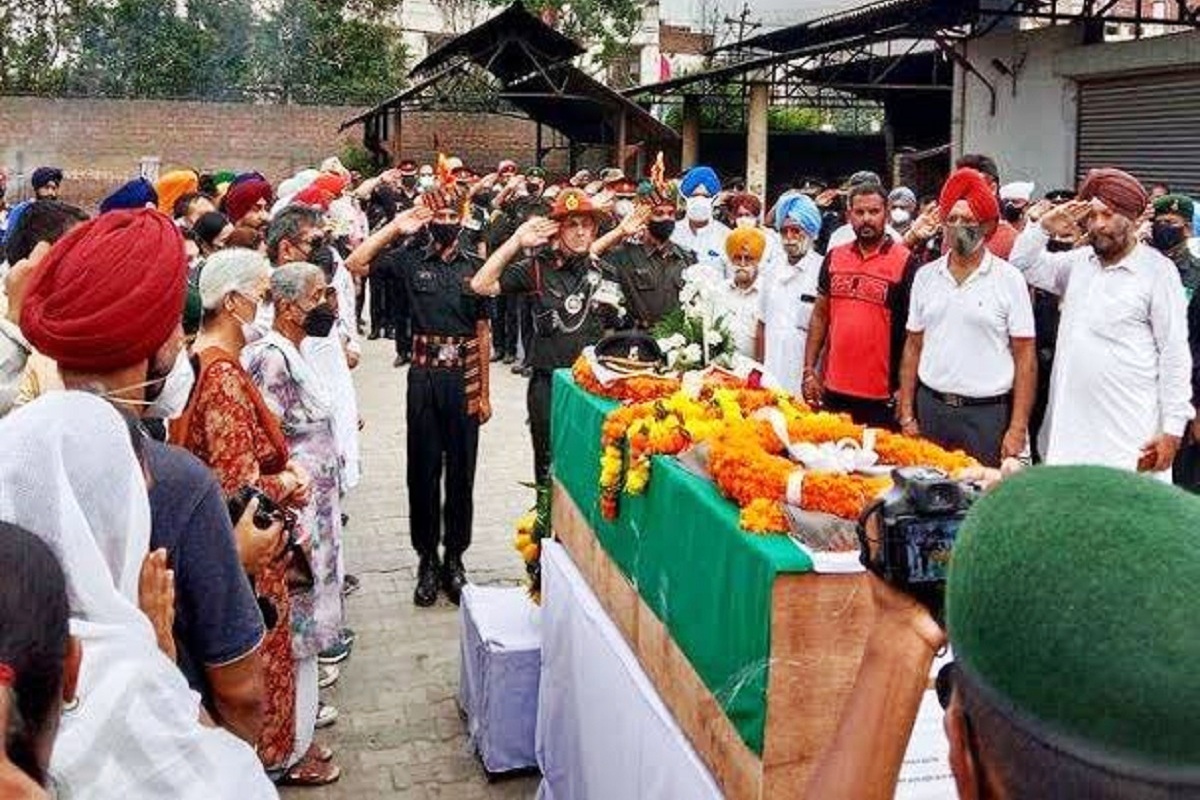LG calls effective for steps to wipe out terrorism from Jammu
Lt. Governor Manoj Sinha, on Thursday, stressed strengthening border security against asymmetric threats due to the porous border with riverine and difficult mountain ranges.
Mortal remains of Lt. Colonel AS Baath were recently found at a depth of nearly 80 metres but search for Captain Jayant Joshi was continuing.

The remains of Lt Col AS Batth, pilot of the Army Aviation helicopter which crashed in Ranjit Sagar Dam reservoir on Aug 3, were cremated in his hometown Amritsar. He is survived by his mother, wife and 13-year-old son. (Image: Twitter/@manaman_chhina)
Indian Navy is constantly upscaling its efforts to trace the second pilot of the Army’s helicopter that crashed into the Ranjit Sagar Dam near Kathua district of Jammu on 3 August. Two pilots were flying in the helicopter at the time of the crash.
Mortal remains of Lt. Colonel AS Baath were recently found at a depth of nearly 80 metres but search for Captain Jayant Joshi was continuing.
Advertisement
Defence spokesman Lt. Colonel Devender Anand said on Monday that the Indian Navy has been constantly upscaling and upgrading the equipment being used for this search and salvage operation. The challenge of operating remotely controlled equipment at a depth where human intervention is not feasible and where the visibility is not more than a few inches are being handled by incorporating electronic Multi Beam Sonars etc.
Advertisement
The search operations are being spearheaded by a Commodore rank officer who is expert in Naval rescue operations along with the Indian Army Brigadier having expertise in civil engineering aspects. In addition, search operations are being monitored round the clock by GOC Gurj Division and GOC Rising Star Corps making regular visits to the crash site. The search and rescue operations continue to be executed at a war footing.
The Indian Army is fully committed to retrieving the second crew member of the ill-fated helicopter.
The search and rescue operations for the Pilot Rudra helicopter are going on in full swing. The Defence Forces are employing best of the equipment available in the country to locate the wreckage which includes; Remotely Operated Underwater Vehicles, Handheld Navigation System with Sonar, Side Scanner Sonar with Echo Sensor & Portable Transducer, Divers Propulsion Vehicle, Multi Beam Sonar and Submarine Rescue Unit of Navy.
In addition, Special Forces Commandos along with Marcos of the Indian Navy are carrying out continuous diving in the areas being identified through the technical means. To facilitate the same, Indian Army has also created a large floating platform from where all diving operations along with the launch of specialist equipment are being executed. Various agencies like NDRF, civilian experts and Dam authorities have also been incorporated in the search operations, said the spokesman.
Advertisement